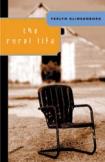A Year on the Farm
Writing of his need to keep a journal, Verlyn Klinkenborg indicates in The Rural Life that he hopes it will be a conscientious record of the count of crows in the field every afternoon.... If a flock of turkeys walks into the barnyard, I want to mention the fact. If one of the horses throws a shoe, I want to say so, in writing, before I call the farrier; and I’d like to be able to tell from my journal just how many bales of hay I have squirreled away in the barn. It’s no longer the writer in me that wants to keep a journal. It’s the farmeror rather the son and nephew and grandson of farmers.
Verlyn Klinkenborg’s grandparents owned a farm northwest of George, Ia., but there was not enough acreage for each son to inherit a workable piece. So his father became a public-school music teacher and, when Verlyn was a child, moved his family to California. But the pull of agriculture was such that Ronald Klinkenborg would create a getaway farm in the hills east of Sacramento. And his son, with a Ph.D. in English literature from Princeton and freelance writing credits in The New Yorker, Harper’s, Esquire and Mother Jones, also could not resist the allure of the land and lives now on a small farm in upstate New York.
In some ways he still feels a greenhorn: Ever since I’ve lived in the East, I’ve wandered through a forest of gross generalization, able in summer to tell an oak from a maple and a pine from a birch, but unable to make any finer distinctions. Eucalyptus, manzanita, madrone, juniper, pinyon, even acaciaeach of these western trees I recognize, but none of them grows native in the woods around me. What does grow here, I’ve been able to say rather grandly till now, are trees.
The freshness and delight of this book are exactly in that Will Rogers pose of canny innocence, its seeing old things sideways and new.
Watching these chickens grow, building a house for them, getting to understand how they regard the world, I’ve been surprised again and again by how much of what I know about chickens comes from the cartoons I watched as a kid. Not that I expected the presence of Foghorn Leghorn in our Buff Orpington roosters or the opulent, Odalisque-like preening of cartoon hens. But I recognize the incessant barnyard drama from the cartoons, and when my dad and I built the chicken house in October I couldn’t resist adding a slatted ramp of the kind that every cartoon chicken house always had.
And Klinkenborg can be poignantly aware of the restorative powers of nature. Heading out to his farm after Sept. 11, 2001, he writes:
The countryside seemed to pour itself down into the windows of the pickup, the empty corncribs, the neat stacks of firewood, the mellifluous pastures on the highest hillsides. At home the horses and dogs consoled me in a way I couldn’t understand, until I finally realized that they could not be told what happened that week. In that fact lay the consolation. They had only the old news to give, their old satisfaction with the world as they know it.
Most of the notes and observations collected in this book first appeared in the column The Rural Life in The New York Times, where Verlyn Klinkenborg serves on the editorial board. Written over seven years, the journal entries and essays are arranged into a 12-month calendar year here, so there are occasional sudden shifts in the seasons, but these are, as the author trusts, no more erratic than what the weather actually brings us these days. Slightly more jarring are the shifts in locale as he leaves his New York farm for a vacation in Wyoming, a high school football game in Absarokee, Mont., and President Clinton’s dedication of Walden Pond, where Tony Bennett jogged onto the stage as if it were the Copacabana. I found myself worrying over who was taking care of the chores back home. But this is a lovely, intimate chronicle, full of humor, wisdom and poetry about country living and the concrete pleasures of tending and gardening for which our hands and hearts yearn.
This article also appeared in print, under the headline “A Year on the Farm,” in the January 20, 2003, issue.








